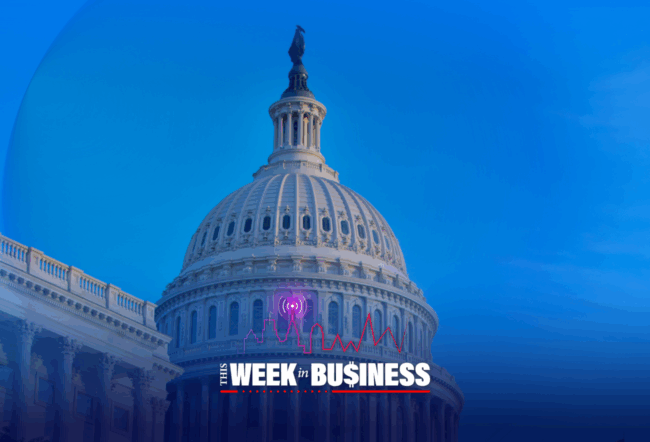In many industries, the major providers typically adhere to an implicit consensus to hold prices within a reasonable range, warding off cutthroat competition that could lead to a race to the bottom. This tacit collusion fosters an environment of healthy rivalry, ensuring a balance between market forces. It breaks down, however, when the industry faces financial distress, triggering a spiral of pain all around.
In a new paper titled “Feedback and Contagion Through Distressed Competition,” Wharton finance professor Winston Wei Dou and his co-authors trace “the dangerous spiral between financial distress and competition” that manifests in that setting. Dou’s co-authors are MIT finance professor Hui Chen, University of Hong Kong finance professor Hongye Guo, and Hong Kong University of Science and Technology finance professor Yan Ji. Guo was a Wharton doctoral student when he co-authored the paper.
Financial Distress and Corporate Debt Appetite
Firms that are in financial distress tend to compete more aggressively, the paper stated. This intensified competition in turn reduces profit margins, pushing firms into deeper distress and adversely affecting other firms, the authors added. Firms resort to predatory tactics and self-defensive measures, and those that take on excessive debt in pursuit of capacity expansion and revenue growth ultimately pose a significant threat to the overall financial stability of their sector.
The authors capture those “feedback and contagion effects” by employing a model that utilizes variations in long-term defaultable debt as a proxy for a “distress shock” and analyzing how it impacts the financial health of firms. “What can really make firms feel distressed are long-term debts that could cause debt overhang problems,” Dou explained. Nevertheless, the study acknowledges that the rollover risk associated with short-term debts and the potential threats posed by debt covenants can further exacerbate a firm’s financial distress, compounding the challenges they face.
When a company experiences delinquency or inadequate earnings, debt issuers could flag violations of the debt covenants, which in turn would raise concerns among the firm’s equity holders (or managers representing shareholders) that they could lose their control rights to creditors, Dou said. In that situation, the firm will change its competitive behavior to “become more myopic,” he added. “The long-term future will mean less to them. They need to survive first.”
How Competitive Firm Behavior Shifts
Firms typically employ a combination of tactical competition, characterized by long-term and proactive approaches. Tactical competition entails dynamic responses to market changes. The model in the study showed how the interplay between tactical competition and the threat of financial distress generates a “distressed competition mechanism.” The way that mechanism works is “when firms are in financial distress, they tend to compete more aggressively,” the paper stated. The intensified competition, in turn, “diminishes the profit margins of all firms in the industry, pushing some further into distress,” the authors added.
“The long-term future will mean less to [firms in financial distress]. They need to survive first.”— Winston Dou
The paper showed how financial distress at a firm triggers a series of outcomes with industry-wide effects: When firms face increased financial distress, they also run a higher risk of default. Such firms exhibit heightened impatience and a stronger focus on short-term outcomes. As a result, they find it increasingly challenging to sustain tacit collusion or a “competitive balance” that prevents a race to the bottom in terms of pricing. This is because they ignore the likelihood of future retaliation by their rivals. Consequently, these firms are forced to withdraw from implicit collusion agreements and intensify their competitive behavior, leading to a decline in profit margins. “Lower profit margins then push the firms further into financial distress, closing the feedback loop,” the paper stated.
How a Distress Loop Plays Out
That pattern implies a “competition-distress feedback loop” and a new form of financial contagion, the paper continued. It explained how that loop plays out: When firms face financial distress, their cash flow horizon shrinks owing to the heightened risk of failure or transfer of control rights. This impairs their ability to sustain tacit collusion or maintain a “competitive balance.” As a result, profitability is negatively affected. This deterioration in profitability further erodes the firm’s cash flows, exacerbating its financial distress and plunging it into a deeper crisis. The feedback loop amplifies the adverse impact on the firm’s overall financial well-being.
The reduced incentive for raising leverage (the proportion of debt relative to equity capital) also explains the so-called “profitability-leverage puzzle” at an industry level. The study solved that puzzle by improving upon the traditional theory of capital structure, which implies that firms with higher profitability have an appetite for higher leverage. The model showed that industries with a greater capacity to sustain tacit collusion or maintain a “competitive balance” tend to exhibit higher profitability due to reduced price competition. However, the firms operating within these industries tend to have lower leverage levels. This can be attributed to the presence of a stronger “competition-distress feedback loop” which diminishes their incentive to raise leverage.
To Collude or Not to Collude
Dou pointed out that the capacity for tacit collusion is reduced in industries with a high left-tail risk, which entails a significant probability of cash-flow slumps or business closures, because the threat of being replaced by a new entrant looms. He exemplified technology companies that face the potential for their fortunes to rapidly shift with the emergence of a game-changing alternative in the market, such as a new search engine. The unpredictable nature of the industry undermines the stability necessary for sustained tacit collusion among market leaders. “It’s hard for say, the top two companies to even passively collude because who knows, maybe tomorrow both of them will be replaced by a new entrant.”
But in other industries such as luxury goods, “where companies have been around for a hundred years or more,” tacit collusion is sustainable because they possess the stability required for maintaining tacit collusion or a competitive balance, Dou continued. Those firms also tend to be “very careful” in increasing their debt, stemming from their recognition of a stronger competition-distress feedback loop, he noted.



